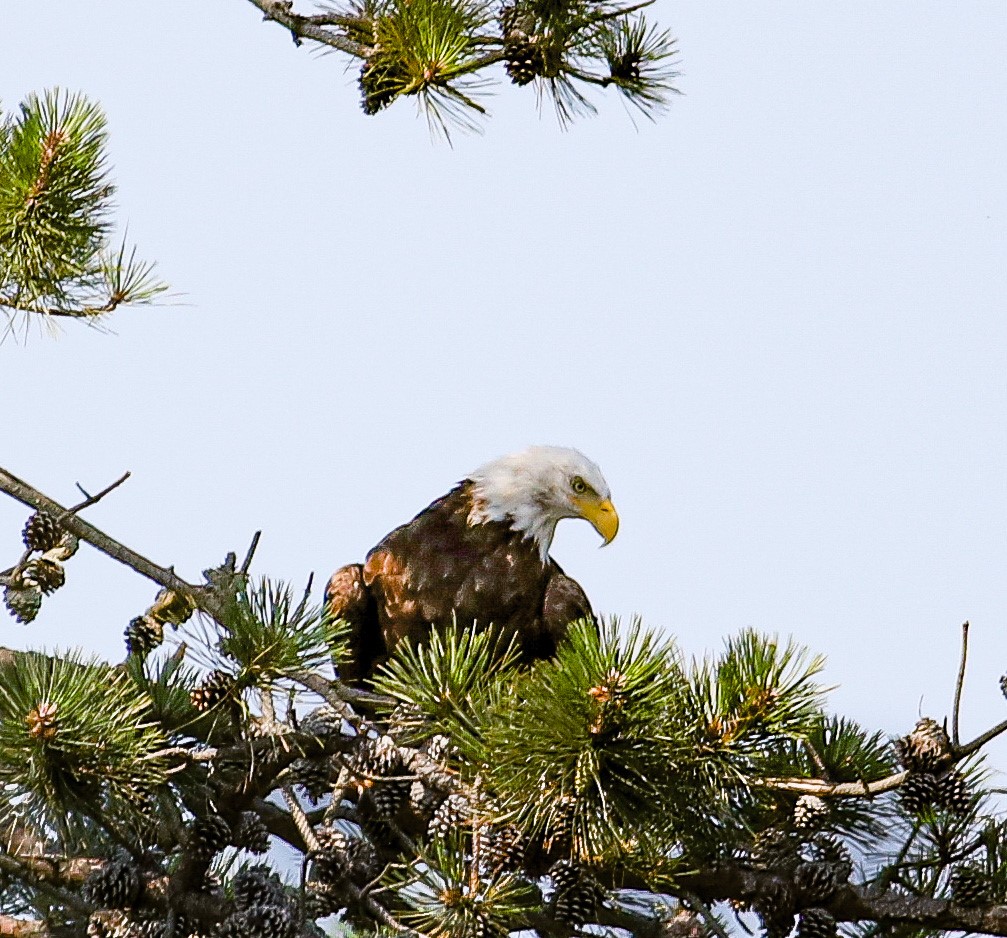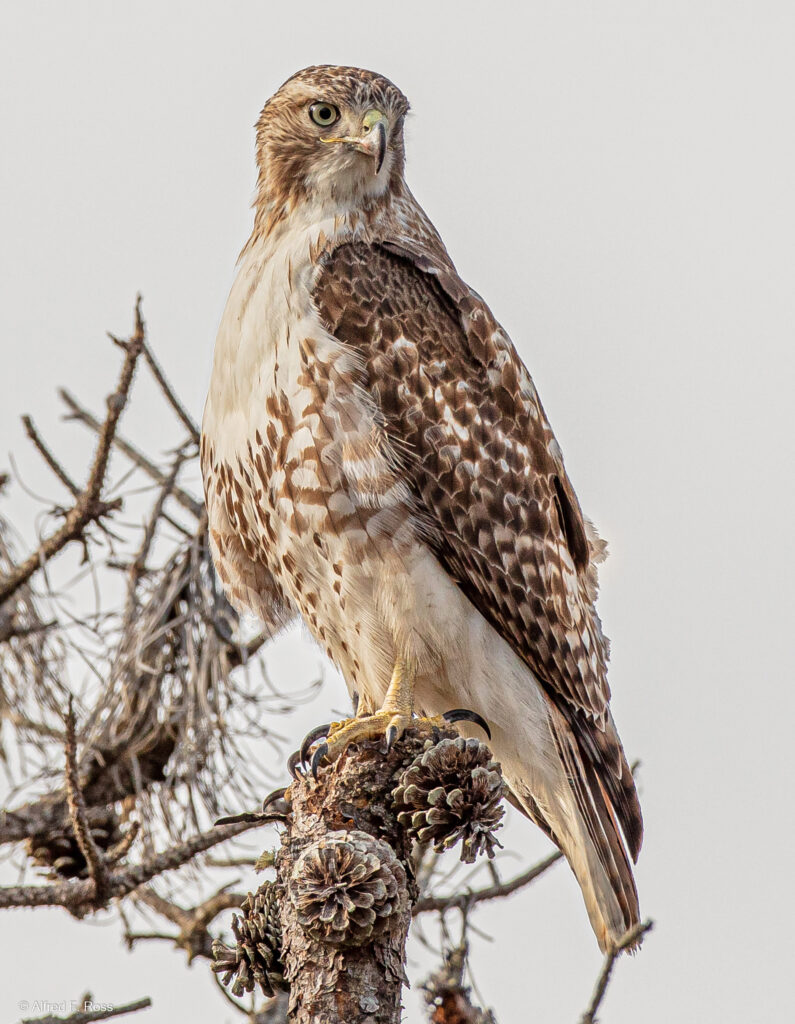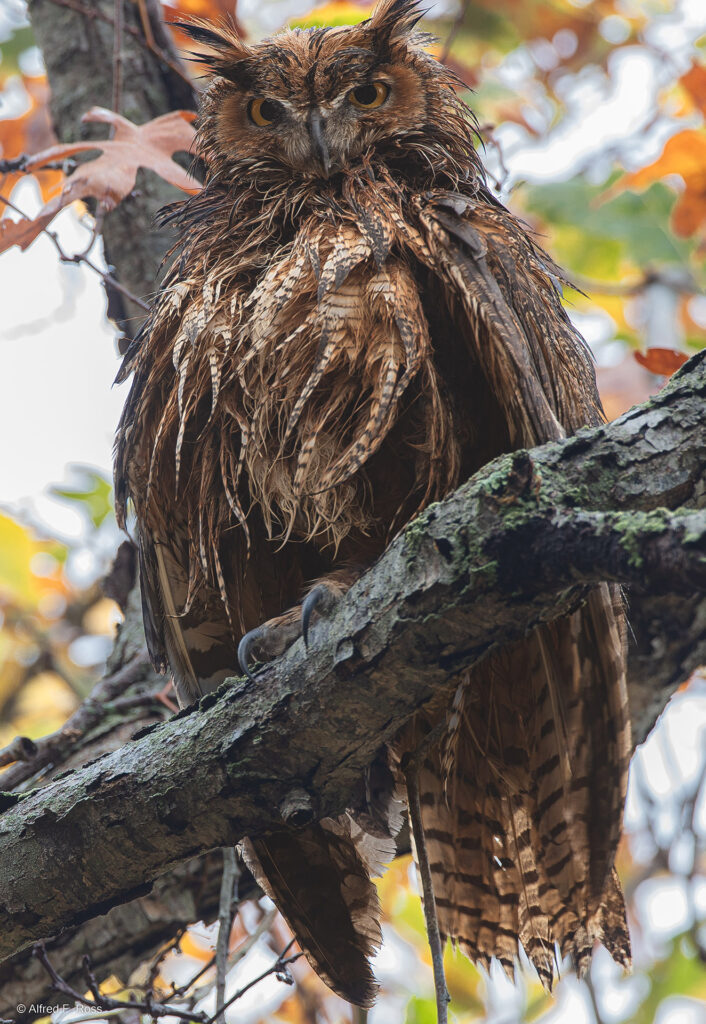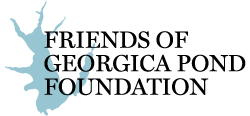Birds of Prey at Georgica Pond
Birds of Prey or raptors hold a special appeal to many. They are bold, brave, strong and big, and easy to see in most cases. At Georgica Pond there are a number of raptors that either nest or use the pond regularly as part of their daily hunt for food. In this Newsletter we highlight four which are either very common, easily seen or secretive, but easily heard.

Osprey (Pandion haliaetus)
weight: 2 – 4.6 lbs. | wingspan: 5 ft.
The osprey or fish hawk is probably the most common raptor at Georgica Pond between March and November. This distinctive hawk feeds exclusively on fish and fortunately, Georgica Pond still provides enough fish to keep them here hunting throughout their breeding season–but they do not nest at the pond. Their large stick nests are easily seen at many other local estuaries such as Accabonac Harbor, Napeague Harbor and along Long Beach in Sag Harbor. At the end of the breeding season, they migrate to warmer climes, even as far south as Brazil.

Bald Eagle (Haliaeetus leucocephalus)
weight: 6.6 – 14 lbs. | wingspan: 5.9 – 7.5 ft.
Our national symbol has made a recent return to eastern Long Island. Until last summer there was a nest on the pond. The nest was in a pitch pine tree which succumbed to the southern pine beetle and snapped in a high wind. Down came the huge nest. The pair is still observed at the pond, and the hope is that they are building a new nest. Eagles prefer to nest in living trees especially pines but will nest in deciduous trees which are close to water. Global warming is most likely responsible for the northern march of the southern pine beetle which has wrought devastation on our local pitch pine forests. Bald Eagles are here year round and start nesting in mid to late winter.

Red-Tailed Hawk (Buteo jamaicensis)
weight: 2.5 lbs. | wingspan: 3.4 – 4.8 ft.
This large hawk is the most common hawk on eastern Long Island and probably in all of North America. Listen for a loud descending scream and look up for the beautiful orangish tail which can be seen from below. Red-tails are very adaptable and nest in wooded areas but are famous for nesting on an apartment window sill in New York City. They feed on small rodents and can be seen soaring overhead at Georgica Pond heading for nearby fields.

Great Horned Owl (Bubo virginianus)
weight: 3.2 lbs. | wingspan: 4.6 ft.
You may never see the nocturnal Great Horned Owl, but if you do, you can’t miss the two ear tufts (“horns”). It is true that they can swivel their head more than 180 degrees so that their large yellow eyes can take in the scenery! You are more likely to hear the Great Horned Owl. Listen for a low hoo hoo. It is a distinctive, haunting hoot. These are very large birds and widespread across North America. I was once lucky enough to see one catch an adult cottontail rabbit. The rabbit didn’t stand a chance…
All of these birds are widespread and much more common than previously due to conservation measures and protection of their habitats. But, like all birds of prey (top predators), they are susceptible to contaminants which concentrate up the food chain. Help them by not using pesticides or poisons, leave a few old dead trees for roosting and nesting and help us improve Georgica Pond’s water quality so that fish are plentiful. With a little effort, anyone can see and marvel at these four amazing large birds of prey.
All photos taken at Georgica Pond by Alfred Ross.
